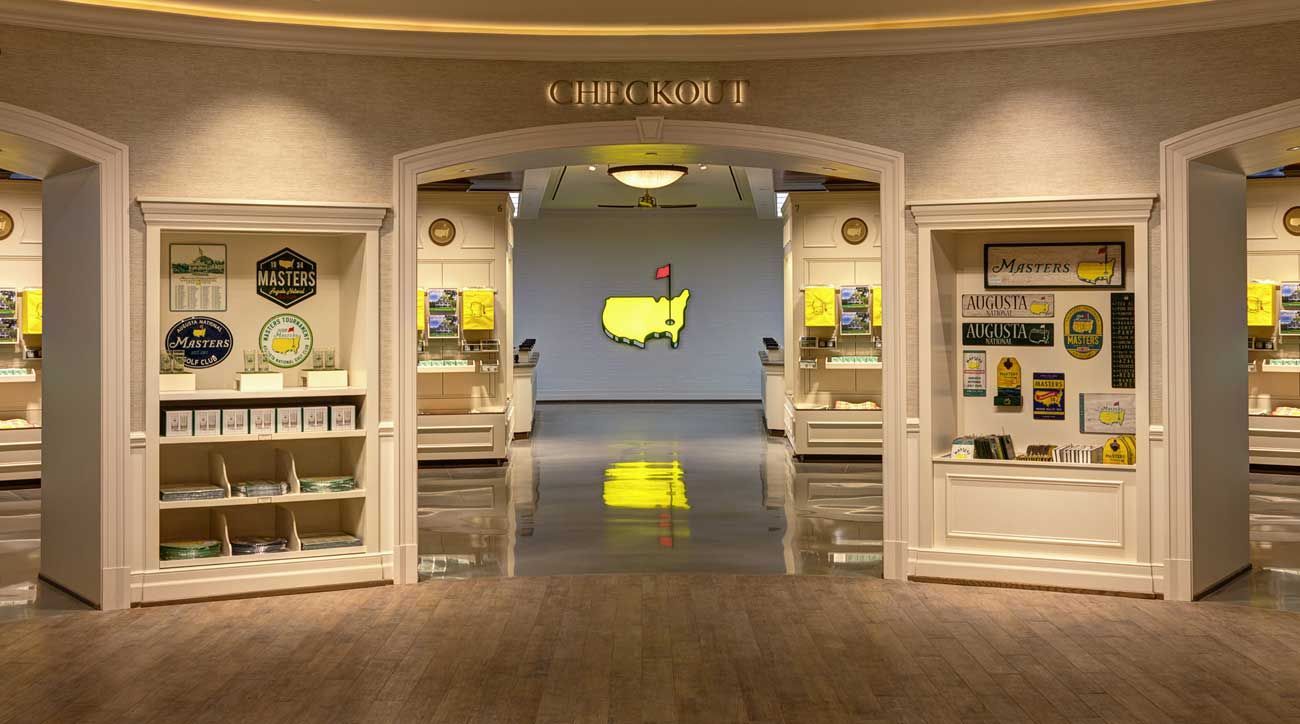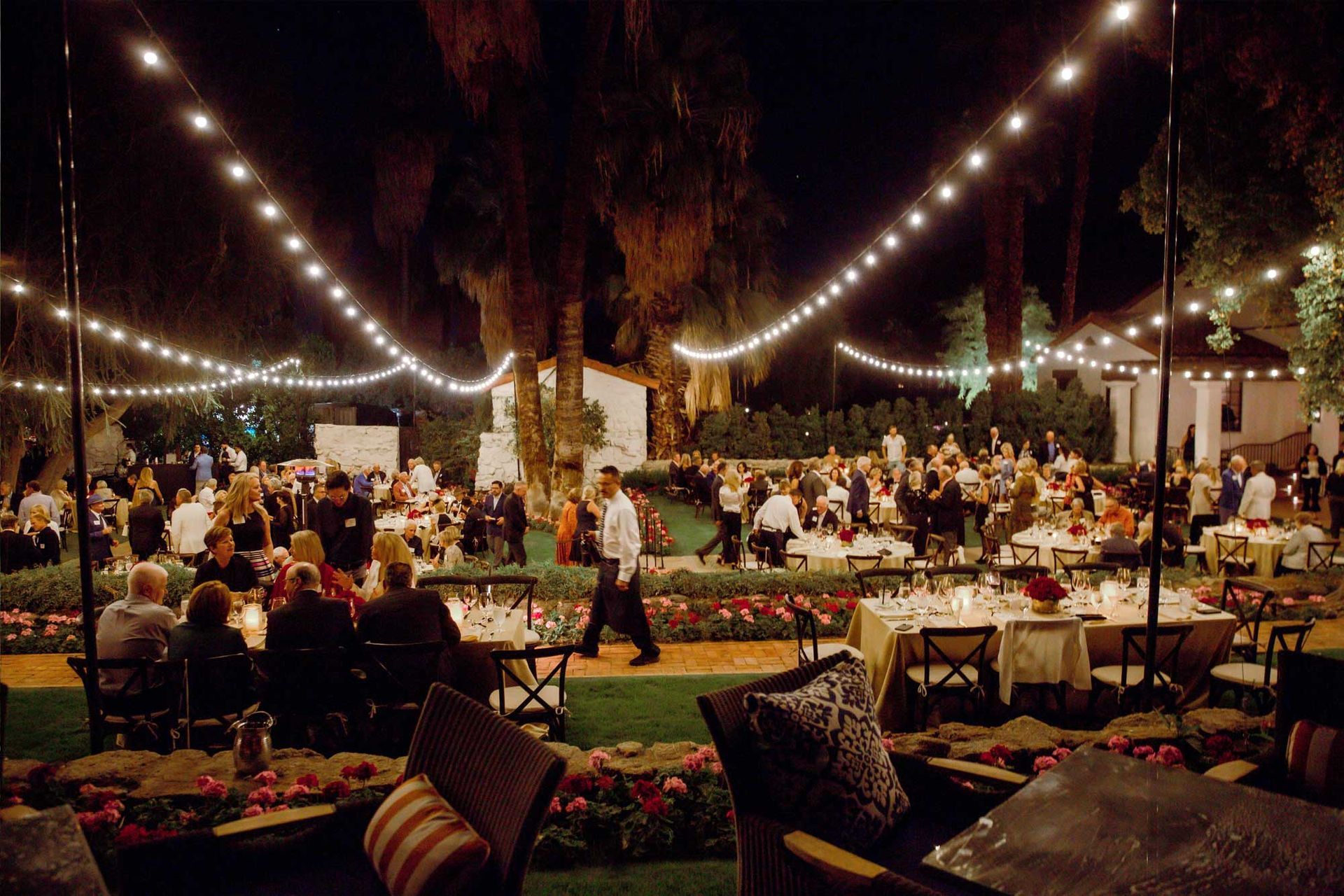May 20, 2025
10 Non-Traditional Revenue Streams Golf Clubs Are Using to Maximize Profit

How smart course owners are transforming underused space, brand potential, and community ties into meaningful income

The Evolution of Club Revenue – Thinking Beyond Tee Times
For decades, the business model for most golf clubs revolved around a predictable rhythm of memberships, green fees, cart rentals, and food and beverage operations. But as the sport’s demographics shift and economic conditions become more variable, savvy club owners are seeking innovative ways to generate sustainable income. It’s no longer enough to simply fill tee sheets and host tournaments—success today is rooted in diversification. As leisure preferences change, the modern club must become more than just a golf destination; it has to offer a full-spectrum experience that appeals to a wider audience.
This evolution isn’t about abandoning tradition—it’s about building on it. The reputation, exclusivity, and scenic settings of most golf clubs already offer a strong foundation. What’s changing is the willingness of ownership to reimagine that foundation for new audiences. When property and brand are leveraged correctly, golf clubs can become lifestyle hubs, hospitality centers, retail engines, and even cultural institutions. This strategic diversification does more than improve margins—it reduces risk, stabilizes income, and keeps the club relevant in a competitive market.
The clubs leading this charge aren’t just experimenting; they’re investing. They are hiring consultants, partnering with adjacent industries, and building long-term infrastructure around new offerings. In doing so, they are creating fresh revenue streams that aren’t dependent on weather, seasonality, or player frequency. From experiential events to brand licensing, golf clubs are finally beginning to understand that their greatest asset isn’t just the course—it’s the community and creativity it can inspire.
The following sections dive into ten of the most impactful non-traditional revenue streams available to golf clubs today. Each one represents a growing opportunity for financial gain, long-term member retention, and industry leadership. Whether you’re a private course operator, a resort owner, or an investor in golf real estate, these ideas offer a blueprint for maximizing profitability in ways that are anything but par for the course.
Event Hosting and Private Functions – The Club as a Premier Venue
One of the most underutilized revenue channels for many golf clubs is event hosting. With their manicured landscapes, spacious clubhouses, and existing food and beverage infrastructure, most clubs are naturally suited for private functions ranging from weddings and reunions to corporate retreats. Yet, too often, the marketing and operational focus remains exclusively on golf, leaving this lucrative opportunity either poorly executed or completely ignored.
When done right, hosting private events can become a cornerstone of a club’s off-season or weekday income. It starts with a dedicated strategy: professional event staff, tailored packages, and a marketing campaign that targets non-golfing audiences. The clubhouse becomes a canvas for transformation—able to host elegant black-tie galas one weekend and energetic team-building activities the next. In high-demand regions, some clubs have even added secondary structures like garden pavilions or converted maintenance barns to increase event capacity.
Event hosting also introduces the club to a wider community, many of whom may never have visited otherwise. A wedding guest today could be a fitness member tomorrow or a corporate executive planning a golf outing next quarter. Each event is a touchpoint that creates awareness and goodwill. This visibility is invaluable for clubs trying to increase memberships, promote other services, or build a brand that resonates beyond golf.
Financially, private functions often deliver a stronger profit margin than standard club operations. There’s less dependency on course maintenance, and ancillary services like catering, AV setup, and valet parking can be charged at premium rates. When planned with precision, a single weekend event can generate the same revenue as a week of tee times—and often with less wear and tear on your greens.
Real Estate Development – Building Community, Not Just Membership
In markets with available land or long-term property leases, integrating real estate development into a golf club’s strategy can unlock powerful revenue and membership dynamics. Many successful clubs have expanded their footprint to include luxury residences, vacation villas, or retirement communities designed to complement the golf lifestyle. These properties not only drive real estate profits but also function as built-in member pipelines and advocates for the club brand.
The appeal of “golf course living” is strong and well-established, but today’s buyers are more selective. They want access to premium amenities, diverse experiences, and flexible club models. Developers and club owners who understand this can create curated residential neighborhoods that integrate seamlessly with the club's services. Walking trails, spa access, and concierge services become selling points not just for the home, but for the community as a whole.
The benefit for the club goes beyond one-time sales. Most real estate-linked communities establish some form of required or incentivized club membership, ensuring that homeowners contribute to operational revenue on an ongoing basis. Even more importantly, these residents often serve as the club’s most loyal patrons, attending events, bringing guests, and supporting on-site services year-round.
Strategically, real estate investments also create more control over land use and long-term planning. When clubs own or partner in the development of surrounding property, they can ensure compatibility in aesthetics, traffic flow, and community standards. This creates a more unified brand experience—and a stronger asset base that can appreciate in value over time.

Culinary Excellence and Signature Dining – Turning Tables into Profits
While nearly every golf club offers food and beverage service, few fully capitalize on the culinary side of their business. Yet, fine dining represents one of the most promising opportunities to create a secondary brand, elevate the member experience, and significantly grow profits. Clubs that invest in top-tier chefs, locally sourced menus, and creative dining environments are seeing their restaurants become destinations in their own right—not just afterthoughts to a round of golf.
The key to success here is differentiation. Rather than defaulting to standard pub fare or buffet-style lunches, modern clubs are creating signature dining experiences that rival standalone restaurants. These can include wine pairing dinners, chef's table experiences, or rotating seasonal menus that reflect regional ingredients and culinary trends. A well-executed food program doesn't just retain members; it attracts non-golfers, travel bloggers, and local foodies.
A strong restaurant program also adds credibility to other revenue initiatives, such as events and real estate. Prospective brides, homebuyers, and conference planners are far more likely to choose a venue with exceptional dining. Additionally, clubs can introduce loyalty programs or dining memberships that appeal to nearby residents who don’t golf but still want access to exclusive cuisine and ambiance.
Operationally, culinary programs are an ideal area for upselling and cost control. With smart inventory systems and high-margin beverage options, profit per square foot in a well-run dining room can outperform that of many other club departments. And with food culture deeply integrated into social media, a strong dining identity becomes an organic marketing tool, driving awareness and desire in a way few other strategies can.
Youth Programs and Summer Camps – Cultivating the Next Generation
Many club owners underestimate the long-term value of youth engagement—not only as a social benefit but as a revenue-generating strategy. Structured youth programs, particularly summer camps and junior golf academies, introduce entire families to the club in a way that builds deep loyalty. These programs often require fewer resources than adult-focused events and yet can generate significant per capita revenue while filling the club during otherwise slow periods.
The financial model for youth programming is attractive because it’s scalable. A weeklong golf and swim camp, for instance, can charge a premium for instruction, meals, and supervision. With the right staff and facilities, these programs can run multiple sessions concurrently, increasing daily throughput. Importantly, camps often draw in non-members, making them a strong lead generator for full family memberships.
From a brand standpoint, youth programs create emotional attachment. When a child has formative experiences at a golf club—learning to drive a ball, making friends, or winning their first tournament—they associate those memories with the club itself. Parents, in turn, become more invested in the club’s future and more willing to spend on lessons, equipment, or upgraded memberships.
These programs can also extend year-round, especially with the rise of home schooling, flexible education models, and after-school enrichment demand. Clubs that position themselves as safe, structured environments for youth development can attract educational partnerships or local grants, further enhancing the bottom line. More than just babysitting, this is brand building at its most generational.
Fitness and Wellness Integration – A Lifestyle Beyond the Fairway
In recent years, golf clubs have begun to recognize that their properties are more than just spaces for sport—they are lifestyle destinations. Capitalizing on this shift, some forward-thinking clubs have introduced full-scale fitness and wellness centers on site. These aren't just standard gyms or yoga studios; they are thoughtfully designed, golf-specific performance facilities that cater to both members and non-members who want to improve their physical conditioning. With the right investment, these wellness amenities become powerful revenue generators, attracting health-conscious locals as well as traveling golfers.
The idea behind this expansion is rooted in long-term member engagement. Golfers who view their club as part of a holistic lifestyle are more likely to invest in personal training sessions, massage therapy, or even diet and wellness consultations. These services can be offered on a pay-per-use basis or bundled into tiered memberships. In either model, the added value justifies a higher price point and encourages greater retention.
Moreover, wellness programming opens new demographic doors. Couples or families who may not all play golf can still be enticed by a club’s amenities if fitness offerings are substantial. Spouses who aren’t golfers but enjoy yoga or Pilates may start to view the club as “theirs,” which can influence the decision to join or renew a family membership. In this way, wellness integration isn’t just an auxiliary service—it’s a profit channel and a community builder rolled into one.
Perhaps most importantly, wellness is futureproof. As younger generations seek clubs that support overall health, not just recreation, those with strong fitness offerings will have a competitive edge. Investing in this area now means staying ahead of changing member expectations and building a brand that reflects a modern, active lifestyle.

Hospitality Partnerships and Private Events
One of the more overlooked but lucrative revenue streams for golf clubs lies in forging partnerships with hospitality groups and offering private event hosting. These events aren’t limited to weddings and corporate retreats anymore. Upscale golf clubs are now marketing their venues for luxury product launches, influencer gatherings, culinary showcases, and exclusive private dinners that offer attendees a taste of the club’s refined atmosphere. These events allow clubs to reposition their image as not only a premier golfing destination but also a versatile venue for high-end social experiences.
For investors and owners, this strategy opens new channels of consistent income that do not depend on daily member traffic or tee time availability. The key is integrating these offerings into the club's identity without disrupting the member experience. Smart clubs accomplish this by dedicating select areas or off-peak days to private functions while preserving uninterrupted access to core golf amenities for members. This careful orchestration maintains the exclusivity that members expect while inviting in a new demographic of clientele—event guests who may convert into long-term members or patrons.
Hospitality partnerships, particularly with local high-end restaurants or boutique hotels, can be mutually beneficial. These partners gain access to a luxurious venue, while the club taps into a broader customer base that includes food and wine connoisseurs, art collectors, and executives seeking elite environments. This kind of experiential branding is an evolution from the typical membership model. The result is a more diversified revenue stream that reflects the lifestyle preferences of the club’s region and elevates the overall brand experience.
In many cases, this direction also enhances the club’s appeal in real estate development and property value. A golf club that becomes known as a sought-after event venue often sees increased demand for surrounding properties, whether it's private homes, villas, or condos. That can translate into higher dues, more attractive developer partnerships, and even opportunities to expand amenities that further reinforce the club's standing as a multifaceted luxury destination.
Incorporating Health, Wellness, and Spa Services
Golf clubs are uniquely positioned to capitalize on the rising demand for wellness-oriented experiences. While the sport itself promotes physical activity and mental rejuvenation, clubs that double down on wellness offerings—such as spas, fitness studios, and personalized health programs—are seeing a marked uptick in member engagement and retention. This is especially compelling for clubs targeting younger, affluent demographics who prioritize holistic wellness in their lifestyle decisions.
Integrating wellness doesn't mean simply building a fitness center. It involves a curated approach that reflects the level of personalization and service members associate with high-end private clubs. This could include things like golf-specific physical therapy, massage treatments designed to aid swing recovery, guided meditation sessions overlooking the course, or even access to nutritional consultations and meal planning. These services build loyalty, deepen engagement, and often generate repeat visits from members and their families who may not golf but enjoy the ambiance and amenities.
From an investment standpoint, wellness amenities offer a compelling return. The profit margins on spa services, personal training, and boutique fitness classes are often higher than traditional food and beverage services. Moreover, these offerings keep people at the club longer, increasing the likelihood of spending across other verticals. They also foster community and connection, both of which drive member satisfaction and retention—key metrics for club profitability.
More progressive clubs are even hiring wellness directors or partnering with local health providers to offer exclusive access to health screenings or preventative care workshops. This positions the golf club not just as a place to play, but as a place to live well. That brand extension has the power to differentiate a club from its competitors and foster a value proposition that extends beyond the fairway.
Integrating E-Sports and Virtual Golf
While it may seem unconventional, integrating e-sports and virtual golf into the traditional club environment is gaining traction as a strategy to appeal to new generations. Golf simulators used to be seen as off-season practice tools. Now, they are becoming standalone attractions that blend entertainment, training, and hospitality. The immersive experiences offered by modern simulators—paired with food, drinks, and social atmospheres—make them ideal for clubs looking to increase traffic and revenue without weather dependency.
These setups can be designed as premium indoor spaces that host virtual tournaments, family nights, or corporate team-building events. They allow members to compete with friends worldwide, practice with data-driven analytics, or simply enjoy a casual game in a climate-controlled environment. For younger demographics who grew up with technology at the core of their experiences, this kind of hybrid offering feels natural and engaging.
From a business angle, simulators and virtual setups provide high-margin returns on relatively modest capital investment. They require less maintenance than outdoor courses and offer reliable year-round usability. Clubs can monetize these spaces through hourly rentals, coaching packages, private events, and digital competitions with entry fees or sponsored prizes. Some clubs are even partnering with gaming brands to run amateur e-golf leagues, further bridging the gap between tradition and innovation.
For club owners and investors, the value of virtual golf extends beyond immediate revenue. It sends a message that the club is forward-thinking, inclusive, and responsive to how golf is evolving in a digital-first culture. It also provides a way to engage families, teens, and tech-savvy professionals who may not be ready for full membership but are open to exploring the club environment through more accessible experiences.

Developing Lifestyle-Focused Real Estate
One of the most powerful ways golf clubs are diversifying revenue is by investing in or partnering on real estate development. The traditional country club model, with homes surrounding the course, is evolving into lifestyle communities where golf is one amenity among many. These planned developments cater to buyers who seek luxury, security, and convenience—often with an eye toward retirement, remote work, or seasonal living.
Modern golf communities are integrating features like wellness centers, gourmet markets, equestrian facilities, co-working lounges, and concierge services. Golf is no longer the only driver of demand; rather, it is a cornerstone of a broader lifestyle ecosystem. This positions the club not only as a recreational destination but as a place people want to live full-time or return to regularly. For club owners, this opens up ongoing revenue streams from property management fees, amenity access fees, and preferential golf memberships for residents.
The symbiosis between real estate and the club’s core operations is critical. Well-designed communities enhance the perceived value of the golf course itself, attracting a more affluent buyer demographic willing to pay premium prices for homes with proximity to elite amenities. For developers and investors, this creates multiple pathways to revenue—initial property sales, recurring service income, and appreciation in land value tied to the club’s brand and amenities.
In some cases, clubs are also exploring fractional ownership or branded residence models, which provide flexible living options for members and high-margin returns for the property side of the business. These models support a transient yet loyal member base—people who may live elsewhere part of the year but maintain an emotional and financial stake in the club community. It’s this blend of lifestyle integration and diversified income that defines the next generation of successful golf club strategy.
Evolving the Golf Club Model for Long-Term Profitability
The business of golf is no longer confined to tee sheets and pro shop margins. Today’s most successful clubs are moving beyond traditional boundaries, embracing a model that prioritizes diversified, experience-driven revenue strategies. From high-end wellness programming and immersive digital golf lounges to branded real estate and creative media content, the modern golf club is transforming into a lifestyle and leisure destination that can thrive through economic cycles, seasonal shifts, and generational changes in consumer behavior.
For golf club owners and investors, the opportunity lies in rethinking what a club can offer and who it can serve. By integrating services that appeal to younger, more experience-focused demographics while still catering to the traditions valued by long-time members, clubs can create a dynamic, resilient ecosystem. It’s not about replacing the game—it’s about enriching the environment in which it’s played. These strategies also empower clubs to increase non-dues revenue, reduce reliance on membership growth alone, and build brand equity that extends far beyond the 18th hole.
Investing in these non-traditional revenue streams does more than protect your bottom line—it reinvents it. It sends a clear message to members, prospects, and partners: this is a forward-thinking, financially sound, and culturally relevant institution. In an era where hospitality and recreation must constantly adapt to shifting expectations, golf clubs that take bold, creative steps toward diversification will not only remain profitable but will lead the industry in defining what the future of golf truly looks like.
Fairway Control is here to help you navigate that future—one innovative decision at a time.
More from Fairway Control












